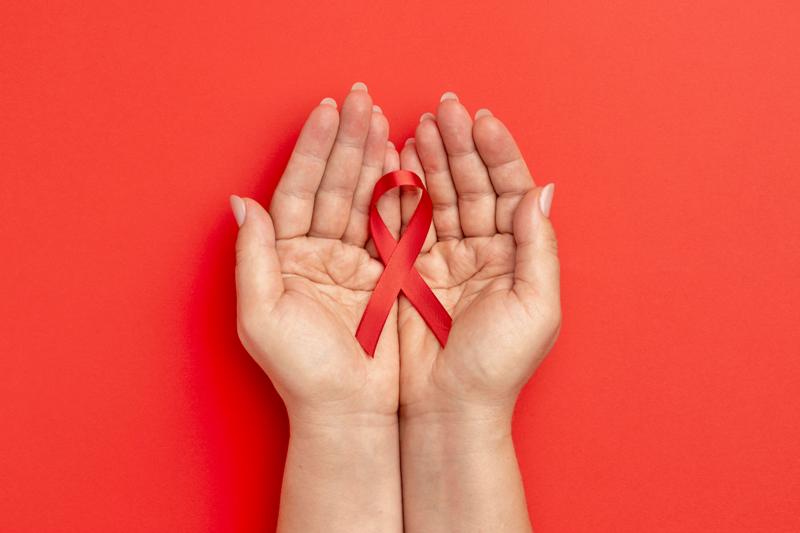By- Dr Ashwini Anil Kumar Sirapanasetty
Biological, socio-cultural and economic– factors make women and young girls more vulnerable to HIV and AIDS. The HIV virus is more easily transmitted from men to women than from women to men; male-to-female transmission during sex is about twice as likely as female tomale transmission. In India, the low status of women, poverty, early marriage, trafficking, sex-work, migration, lack of education and gender discrimination are some of the factors responsible for increasing the vulnerability of women and girls to HIV infection.The impact of HIV and AIDS reaches far beyond the health sector with severe economic and social consequences, and it has been found that it is much more severe on women than men. Women and girls seem to bear disproportionate brunt of the epidemic psychologically, socially and economically.
What is HIV?
HIV stands for human immunodeficiency virus.
Human- A person like me or You, who can belong to our family, neighbours or friends.
Immunodeficiency- This long word means reduce capacity of the body to fight against Diseases.
Virus- Virus is a disease-causing microorganism. In this case we refer to HIV.
If HIV left untreated leads to AIDS! What’s the Difference?
AIDS is the short form for “acquired immunodeficiency syndrome”. AIDS is the last stage of the infection when body loses its strength to fight diseases. In other words, the person is in a condition which impairs his/her immune system. As a result, person becomes prone to all kinds of infections. AIDS is the late stage of HIV infection that occurs when the body’s immune system is badly damaged because of the virus.
What happens when a person gets HIV?
Our body has a set of cells known as CD4 cells. These cells protect us from various infections& provide us with natural immunity. When HIV enters our body, it destroys these CD4 cells making us more susceptible for infections.
Why HIV testing is so important?
A person with HIV is considered to have progressed to AIDS when:
· the number of their CD4 cells falls below 200 cells per cubic millimetre of blood (200 cells/mm3). (In someone with a healthy immune system, CD4 counts are between 500 and 1,600 cells/mm3.) OR
· they develop one or more infections regardless of their CD4 count.
Without HIV medicine, people with AIDS typically survive about 3 years. Once someone has a dangerous opportunistic illness, life expectancy without treatment falls to about 1 year. HIV medicine can still help people at this stage of HIV infection, and it can even be lifesaving. But people who start HIV medicine soon after they get HIV experience more benefits—that’s why HIV testing is so important.
How do people get infected with HIV?
Through 4 main routes HIV gets Spread
- by having unprotected sex
- By receiving HIV infected blood or blood products
- by using unsterilised needles, syringes or lancets
- from an HIV infected mother to her baby
REMEMBER HIV-AIDS DOES NOT SPREAD THROUGH:
- kissing & touching
- Holding hands
- Sharing the same toilets
- Sharing meals, sharing plates
- Mosquito bites
- Sharing clothes
- Seating & sleeping in the same room.
- Using a public phone
- Coughing & sneezing
- Using public bathing places
- Saliva, nose fluid, ear fluid, tears, sweat, faeces or urine.
Condom programming for HIV PREVENTION.
Condoms play a special role in combating the spread of HIV/AIDS because of their ability to protect against the sexual transmission of HIV. Since condoms also prevent pregnancy, couples can use them for dual protection against infection and unintended pregnancy. To encourage people to use condoms, programmes need to raise awareness of HIV/STI risks, make good-quality condoms readily available, teach people how to use condoms correctly, work to eradicate the social stigma associated with condoms, and advocate for HIV prevention and condom use in the community.
Impact of HIV and AIDS on women and female children in India in terms of:
- Burden of care, domestic work and economic responsibilities on women in the HIV households and the role of women as caregivers;
- Health-seeking behaviour and out-of- pocket expenditure incurred by the HIV households on the treatment of opportunistic infections suffered by the PLWHA(People with HIV-AIDS)
- Ever and current enrolment of girls in school, gender differences in the reasons for discontinuation of schooling and the type of school attended by the children from HIV and non-HIV households;
- Stigma and discrimination experienced by the PLWHA in various contexts such as family, community, workplace and healthcare facilities;
- Knowledge , awareness and misconception about HIV and AIDS
Men have an important role to play in ensuring women are not at risk of HIV.
A RESPONSIBLE MAN is one who:
- Does Not Abuse, beats,rapes or discriminates against women & Girls
- SHOWS his wife appreciation of the work she is doing
- SHARES households & financial decisions with her
- EDUCATES his daughter & ensure her access to opportunities.



